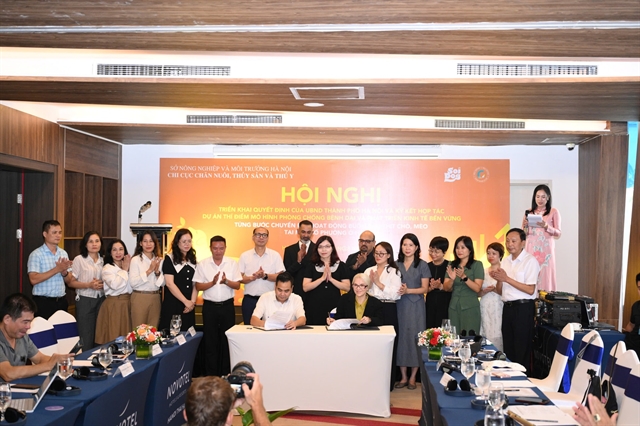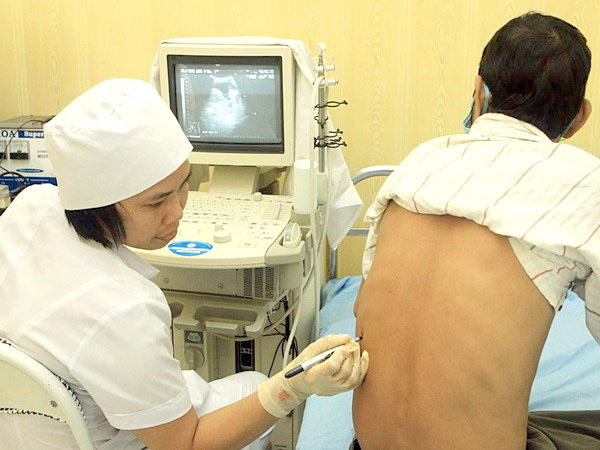 Society
Society

Hà Nội’s tuberculosis (TB) prevention programme was effectively implemented in all communes and wards in 2020, benefiting the population of the capital city.

|
| A doctor examines a TB patient. — VNA/VNS Photo |
HÀ NỘI — Hà Nội’s tuberculosis (TB) prevention programme was effectively implemented in all communes and wards in 2020, benefiting the population of the capital city.
In the first nine months, 16,046 local people suspected of suffering from TB were examined, with 1,156 testing positive.
The programme helped detect and treat 2,821 TB cases of all types.
The management and treatment of TB patients has seen satisfactory results, with 1,233 people cured out of 1,289 TB AFB (acid fast bacilli) (+) cases, or 95.6 per cent.
There were 184 out of 201 TB AFB (+) patients with bacteriological evidence who recovered from the disease, or 91.6 per cent.
Hà Nội has realised the goals set in the National Strategy for TB Prevention and Control by 2020 with a vision towards 2030, with 80 per cent of new cases of AFB (+) being detected and 92 per cent of detected patients recovering from the disease.
The positive results are attributed to Hà Nội’s extensive anti-TB network in all districts, communes, wards and towns, and the application of modern techniques to quickly and effectively treat diagnosed cases.
Attention has also been paid to promoting communication to raise public awareness about the dangers of TB.
TB remains one of the leading causes of death in the world, resulting in nearly 2 million fatalities every year, with drug-resistant TB threatening global health. In Việt Nam, the World Health Organisation (WHO) estimates that there are nearly 130,000 new cases of TB diagnosed each year, resulting in some 16,000 deaths in the country in 2015.
Việt Nam is 16th among 30 countries with the highest number of TB patients in the world, and is 13th among 30 countries facing the burden of multi drug-resistant TB.
The country is leading, however, in TB prevention efforts. The rate of successful treatment of multi drug-resistant TB is over 70 per cent; much higher than the global average of 54 per cent.
Joint efforts
The United States Agency for International Development (USAID) on Tuesday launched the Local Health System Sustainability (LHSS) project in Việt Nam.
The project aims to strengthen the Vietnamese Government’s capacity to sustainably manage HIV and TB programmes towards achieving the country’s commitment to end HIV and TB by 2030.
Through the project, USAID will continue to work with the Vietnamese Government, focusing on four main objectives - strengthening public financial management systems for the health sector and finding greater efficiencies in social health insurance; increasing and improving the efficiency of domestic financing of HIV prevention and treatment services; strengthening the capacity of Việt Nam’s supply chain management system; and integrating TB services into social health insurance.
Speaking at the launching event, USAID Vietnam Mission Director Ann Marie Yastishock congratulated the Vietnamese Government and the Ministry of Health on the successful transition of HIV response from donor to domestic funding, with Social Health Insurance (SHI) as the primary financing mechanism.
Việt Nam now has 90 per cent of HIV patients enrolled in SHI. All treatment facilities can now be reimbursed for HIV services. Most importantly, SHI funds are now used to procure anti-retroviral drugs, the most expensive component of an HIV response.
LHSS Vietnam is a four-year project (2020 – 2024) with a planned budget of $13.9 million, funded by the US government through PEPFAR and USAID.
It is a part of USAID’s global initiative in integrated health systems strengthening to help low- and middle-income countries transition to sustainable, self-financed health systems as a means to support access to universal health coverage. — VNS
.




